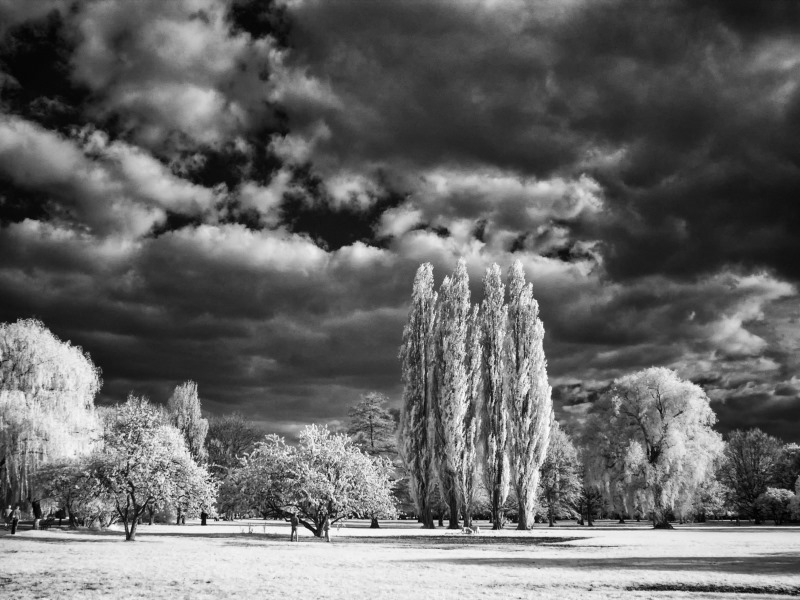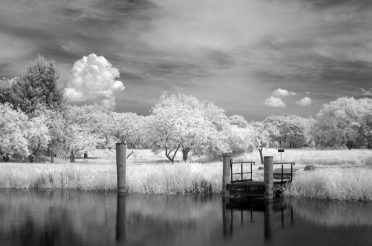Infrared photography records the spectrum of the near infrared on film and / or digital sensors. In order to prevent confusion, this is not thermography or thermal imaging, which records the thermal infrared range.
In the infrared photograph, spectral components of the light are recorded as in conventional photography.
For infrared photography, only analogue cameras with highly sensitive chemical film material were used until the beginning of the nineties. A major problem was that the infrared image could not be evaluated before development. Even the sharpness could only be determined by analog means, mostly in the visible light with a subsequent manual correction, since infrared light has a different index of refraction than visible light. A so-called IR index was marked with a red line on the distance scale on SLR cameras.
Since the introduction of digital photography, infrared photography has become much simpler. Many of today’s digital cameras have an infrared-sensitive sensor but a built-in infrared blocking filter.This blocking filter is the essential reason that not all cameras are infrared-sensitive.
To be able to realize infrared photographs, the visible light must be kept away from the sensor. This is realized with infrared pass filters, referred to simply as IR filters. These pass filters blocks the spectrum of visible light and allow only spectral regions above red to pass. Depending on the type of IR filter, more or less visible red is passed through.


Leave a Reply